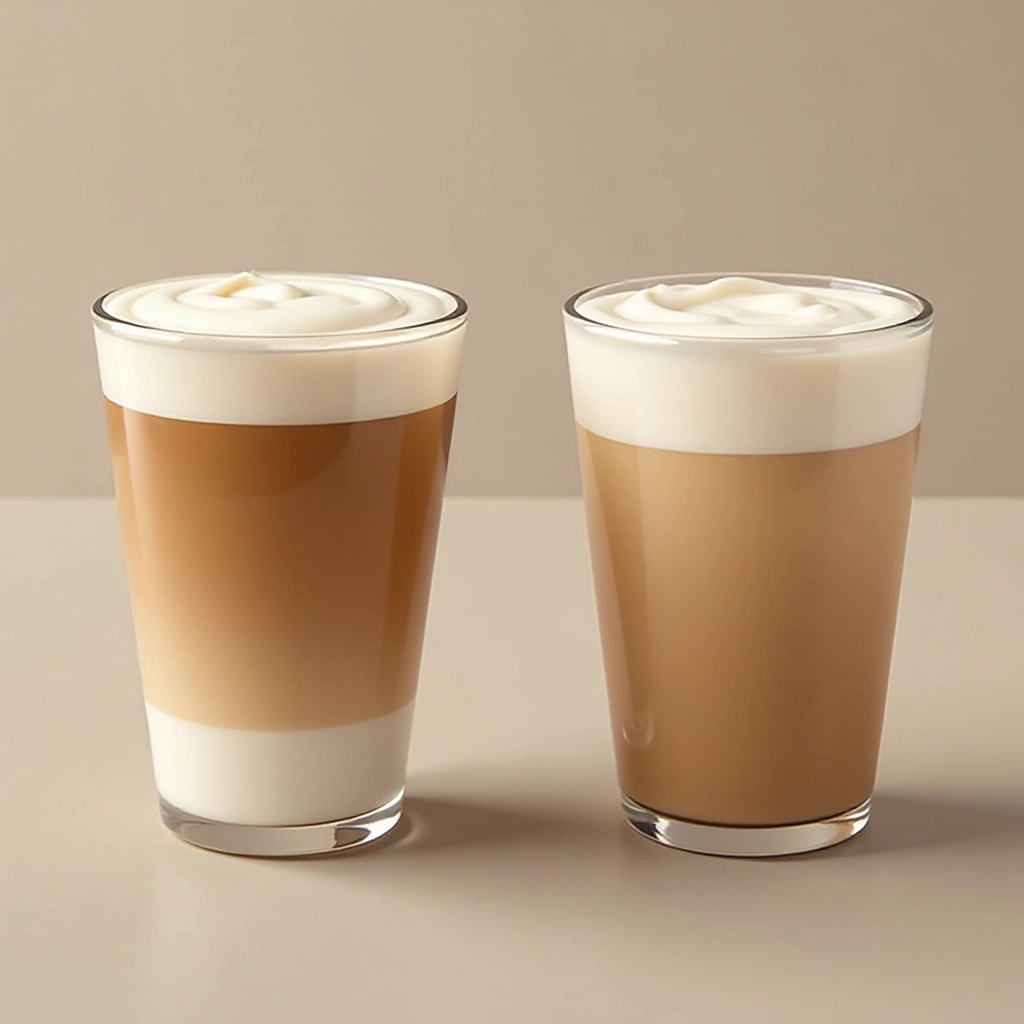If you’ve ever stood in line at a coffee shop, puzzled over the menu, you’re not alone. The choice between a cappuccino and a latte can be confusing, especially when both contain espresso and milk. But the differences, though subtle, can significantly impact your coffee experience.
In this article, I’ll guide you through the distinctions between these two popular beverages, helping you decide which one suits your taste preferences.
Understanding the Basics of Cappuccino and Latte
At their core, both cappuccino and latte are espresso-based drinks combined with steamed milk and milk foam. The primary difference lies in the ratio of these components.
- Cappuccino: Traditionally composed of equal parts espresso, steamed milk, and milk foam. This balance creates a rich and robust flavor with a velvety texture.
- Latte: Consists of one part espresso to two parts steamed milk, topped with a light layer of foam. The higher milk content results in a creamier and milder taste.
Historical Background and Cultural Relevance
The cappuccino originated in Italy and became popular in the 1900s, often associated with breakfast and usually consumed before 11 a.m. Its name is derived from the Capuchin friars, referencing the color of their robes, which resembles the coffee’s tone.
The latte, also rooted in Italian tradition (“caffè latte” meaning “milk coffee”), gained massive popularity in the United States and other countries due to its smooth taste and ability to blend well with flavors like vanilla and caramel.

Ingredients and Proportions: What Sets Cappuccino and Latte Apart
The distinction between cappuccino and latte primarily revolves around the milk-to-espresso ratio:
- Cappuccino: Typically made with a single or double shot of espresso, followed by equal parts of steamed milk and thick milk foam. This composition results in a smaller, more concentrated beverage.
- Latte: Prepared with a single or double shot of espresso, then filled with a larger quantity of steamed milk and topped with a thin layer of foam. This makes for a larger, creamier drink.
Milk Texture and Foam Thickness
The texture of the milk and the thickness of the foam significantly influence the mouthfeel of these beverages:
- Cappuccino: Features a thick, airy foam layer, approximately 1.5 cm thick, providing a light and frothy experience.
- Latte: Has a thinner foam layer, about 1 cm thick, resulting in a smoother and creamier texture.
Flavor and Intensity: Which Suits Your Taste
Your preference for coffee strength and flavor intensity can guide your choice:
- Cappuccino: Offers a stronger espresso flavor due to the balanced ratio of milk and foam, making it ideal for those who enjoy a bold coffee taste.
- Latte: Provides a milder coffee flavor, with the higher milk content softening the espresso’s intensity, perfect for those who prefer a gentler taste.
Serving Size and Presentation Differences
The serving size and presentation also differ between the two:
- Cappuccino: Typically served in a 5 to 6-ounce cup, emphasizing the balance of espresso, milk, and foam.
- Latte: Usually presented in a larger 8 to 12-ounce cup or glass, highlighting its creamy texture and allowing for latte art on the foam surface.
Cappuccino vs. Latte: When to Choose Each
Consider the following scenarios to decide which beverage suits your needs:
- Choose Cappuccino: If you desire a strong coffee flavor with a rich, frothy texture, especially in the morning or as a midday pick-me-up.
- Choose Latte: If you prefer a smoother, creamier drink that’s milder in coffee intensity, suitable for a relaxing afternoon or as a base for flavored syrups.
Popular Variations of Cappuccino and Latte
Both drinks have inspired various adaptations to cater to diverse tastes:
- Cappuccino Variations:
- Dry Cappuccino: Features more foam and less steamed milk, resulting in a stronger espresso flavor.
- Wet Cappuccino: Contains more steamed milk and less foam, offering a creamier texture.
- Latte Variations:
- Flavored Lattes: Incorporate syrups like vanilla, caramel, or hazelnut for added sweetness.
- Iced Latte: Served cold over ice, ideal for warmer weather.
Nutritional Comparison: Calories and Dietary Preferences
When it comes to health, a cappuccino generally has fewer calories due to its lower milk volume. It may be a better option for those monitoring caloric intake. On the other hand, a latte, with more milk, offers a higher calcium content and can be more filling.
Plant-based alternatives like oat, almond, or soy milk are popular in both drinks, especially among vegan or lactose-intolerant consumers. These choices may slightly alter flavor and foam texture.
Home Preparation Tips
You don’t need to visit a café to enjoy a cappuccino or latte. With some basic tools, you can recreate these drinks at home:
- For espresso, a stovetop Moka pot or a dedicated espresso machine works best.
- Steamed milk can be made by heating milk on the stove or in the microwave, then whisking or frothing with a handheld frother.
- For foam, shake warm milk in a jar or use a milk frother to achieve the desired texture.
Experiment with ratios and milk types to find your perfect balance.
See our recipes: Cappuccino / Latte
Common Questions About Cappuccino and Latte
Do both drinks have the same caffeine content? Yes, both typically contain the same amount of espresso, so the caffeine content is similar.
Which is healthier? A cappuccino generally has fewer calories due to less milk content compared to a latte.
Can I make these drinks at home? Absolutely! With an espresso machine or a strong coffee maker and a milk frother, you can recreate both beverages at home.
Which One Is Right for You?
Ultimately, the choice between a cappuccino and a latte depends on your personal taste preferences:
- Opt for a Cappuccino: If you enjoy a robust coffee flavor with a light, frothy texture.
- Opt for a Latte: If you prefer a creamier, milder coffee experience, possibly with added flavors.
Next time you’re at a coffee shop, consider these differences to select the drink that best aligns with your taste.

















